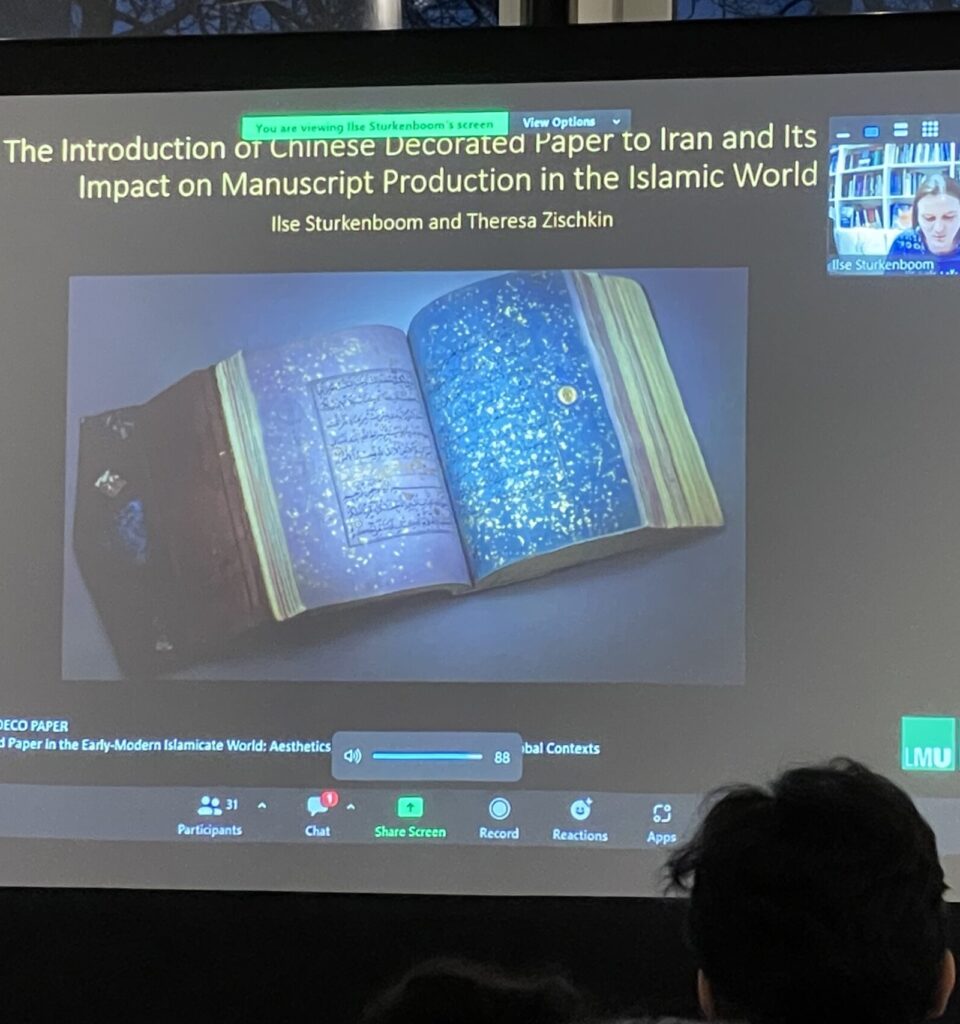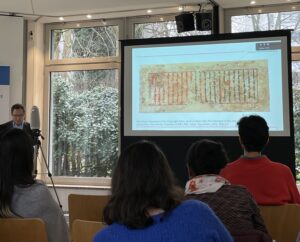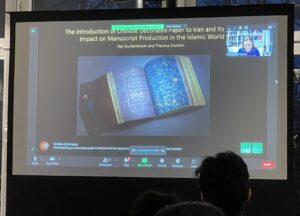

At the CSMC
At the end of January, we headed to Hamburg’s Centre for the Studies of Manuscript Cultures (CSMC), where we gave a talk at the “Facing New Materials: Changes of Writing Substances, Implements and Supports in Manuscript Cultures” workshop entitled “The Introduction of Chinese Decorated Paper to Iran and Its Huge Impact on Manuscript Production in the Islamic World”. Here we spoke about the manuscripts analysed so far, and how their decorations may have migrated from China to Iran and then on to India. Ilse introduced her specialism in Chinese paper, followed by key case studies. Theresa added examples from India with stencils and paper marbling.
Unfortunately, Ilse had to participate online due to a railway strike. Nonetheless, it was an informative workshop where various contacts were forged. For instance, with researchers who spoke about Uyghur manuscripts, Buddhist treatises, formats of the Latin Bible, or about the materiality of paper in general. Topics about Latin palaeography, inscriptions in metal, the transition from brush to pen, and the use of a particular ink were also presented. Even a lecture on Montblanc’s history of the fountain pen was part of the workshop, as well as a digital type design project inspired by a 9th-century Qu’ran in Kufi script.
At the end, we received a tour of the labs on the premises, with detailed explanations of the particular tools. We would like to thank the organisers for the kind invitation and are looking forward to further collaborations!

Ilse’s presentation (online)